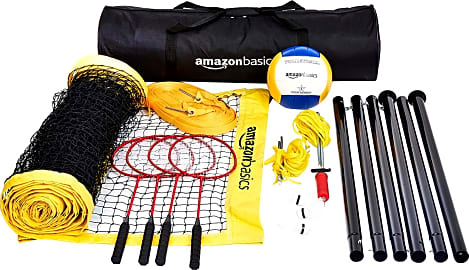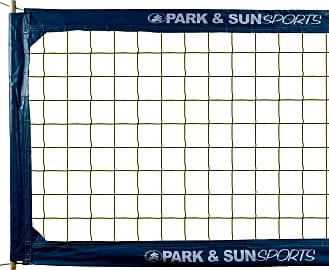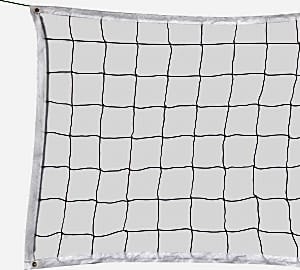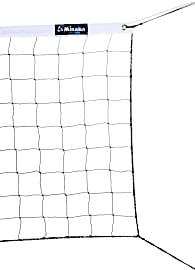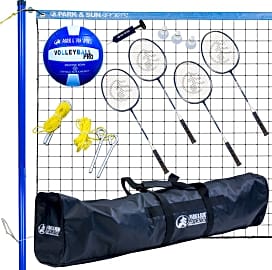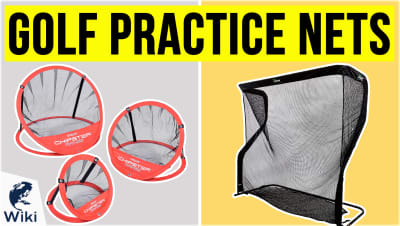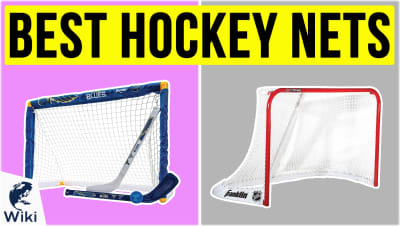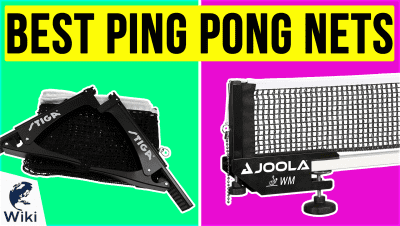The 10 Best Volleyball Nets

This wiki has been updated 36 times since it was first published in April of 2016. The reasons for volleyball's popularity are plenty: it's dead simple to learn, doesn't require the players to have expensive equipment, and offers excellent group fun. If you and your family or friends enjoy this classic sport, you may want to pick up one of these nets. We've included full sets ideal for casual beach or park games as well as pro-level gear for more serious athletes. When users buy our independently chosen editorial choices, we may earn commissions to help fund the Wiki.
Editor's Notes
November 06, 2020:
We removed the Aonek Beach and Verus Sports Expert due to availability concerns and replaced them with the Dourr Professional and Rapicca Tournament. The Dourr Professional is a good pick because of its portability. Despite being regulation size, it’s very lightweight and could be easily kept in your car for an impromptu game of volleyball. The Rapicca Tournament has both the durability and size of a competition net and the portability and adjustability of a more casual net for use in your backyard or at the pool. The Champion Sports Official Olympic has been moved to the top of our list because of its balance between price and performance. It's relatively affordable, but is still used by serious players and coaches. It's also available in both tournament and Olympic sizes.
June 06, 2019:
We've curated a balanced selection of volleyball nets to meet the needs of players of all skill levels. Many of the options in this list are suitable for use indoors or outside, and some even feature waterproof detailing. You'll notice that some of the sets come with useful extras like carrying bags, racquets, balls, and more. Professional athletes will likely gravitate to the tournament or Olympic size options, while those who play just for fun may choose to go with one of the smaller, more portable nets.
The Halex Official and Champro Black/White were removed due to fulfillment concerns. The AmazonBasics JP012 and Aoneky Beach have been added to the list for several reasons. The former comes with tons of accessories and is surprisingly durable, while the latter offers a decent budget-friendly solution for casual players. The Baden Champions Series has been promoted to the number one spot because of its dependability and overwhelmingly positive reviews.
Special Honors
Pop-Bazooka System This heavy-duty option is ideal for competitive volleyball players. The Pop-Bazooka can be raised or lowered quickly using a single steel bolt, making it a great solution for folks who also like to play a round of badminton or tennis every now and again. If you're looking for quality, it doesn't get much better than this one. volleyballusa.com
Triumph Competition Portable The Competition Portable comes from a trusted name in sports equipment. Its three-piece steel poles can stand up to adverse weather conditions, so you don't have to worry about unexpected spring showers ruining your match. And the included carrying bag is made from durable canvas. dickssportinggoods.com
Factors To Consider When Choosing A Volleyball Net
If you are taking the net to the beach or park, you have to consider the load that you will carry or transport.
The game of volleyball has undergone a meteoric rise in popularity since its invention in 1895. It has grown to an estimated global participation figure of more than 900 million people. As a result, the demand for volleyball equipment has increased exponentially since the very first game.
One of the most crucial pieces of volleyball equipment to purchase is the net. There are many factors to consider when you are planning to buy one.
First, you need to decide whether you are buying just the net or a complete volleyball net system. This choice will depend on where you will be using the net. Parks or beaches usually have poles in place to hold a volleyball net. In these cases, you only need the net itself. In places like your own backyard or an open park, you will need the complete net system.
Second, the size of the net is also an important factor to consider. Most consumers buy regulation size nets, but if you are going to set up your net in a park or school where there is already a system in place, you need to purchase one that will meet the size requirements of the system. Be sure to refer to the online product description to check the net’s dimensions. However, if you need a net that can be versatile, there are also many options. Whether the players are children or adults, there is a size suitable for any age group.
Third, the weight of the net is also a big factor. If you are taking the net to the beach or park, you have to consider the load that you will carry or transport. The weight will depend upon the design and the materials used in manufacturing the net. To check these details, always refer to the product description. Be sure to choose a net that is easy to carry around.
Lastly, you need to make sure that you are buying a net for the right skill level. Some volleyball nets are made for professional competitions. There are also nets for recreational games. The quality and design of these nets vary according to specific purposes. Again, to know if the net meets the standards of the level of competition you’re playing at, you should refer to the product information found online.
Types Of Volleyball Nets
To properly classify volleyball nets, you should consider three things — material, purpose, and setup.
They are usually treated with weatherproofing chemicals to keep the moisture out of the net.
For material types, there are two. One is nylon, which is more expensive but durable. Volleyball nets that are made of nylon last longer because they are weather resistant. They are usually treated with weatherproofing chemicals to keep the moisture out of the net. This is the reason why nylon nets are costly. The second option is poly. This type of material is less expensive and less durable, which means it will not last long. However, some consumers prefer poly because it does not require additional weatherproofing. Thus, the selection of poly can reduce your overall investment.
There are two classifications of a volleyball net’s purpose: indoor or outdoor. Because the court size varies depending on where the game is played, volleyball nets also come in different sizes. Traditionally, outdoor volleyball nets are smaller than indoor volleyball nets. The purpose of the net also affects its quality. Outdoor nets are designed to withstand harsh weather conditions while indoor nets are usually not weatherproof.
Setup pertains to how the net is placed or mounted. You can choose from in-ground nets or portable net systems. In-ground means that the poles of the net are fixed to the ground. Conversely, portable nets are movable and may be dismantled.
How Volleyball Was Invented
Volleyball has earned its place in a selection of the most popular spectator sports in the world. It remained solely an American game for a few years after its creation, but over the 20th century, it has been played across several nations, including Brazil, Russia, Japan, and more.
In 1895, William G. Morgan, an educator and businessman, invented volleyball. He thought of combining elements of basketball, tennis, and baseball to come up with a game that would require less physical contact than the other games that were invented before it.
On July 7, 1896, the first game of volleyball was played at Springfield College.
Morgan was a graduate of Springfield College where he met basketball inventor James Naismith. Both men pursued a career in Physical Education at the Young Men’s Christian Association. In the summer of 1895, Morgan moved to Holyoke, Massachusetts where he worked as the YMCA Director of Physical Education. His work allowed him to come up with new workout plans and to teach young men how to play sports.
It was around this time that he noticed that the newly created game of basketball was too strenuous for non-athletic adults and older men. They could not keep up with running up and down the court, along with the bumping and jolting with other players. He wanted to devise a game that could be played by anyone, no matter their stature, strength, skills, or age. It still had to be physical, providing exercise after a hard day’s work, but also relaxing. This was the beginning of volleyball.
At first, Morgan termed his new game "Mintonette" which was derived from badminton. In 1896, a conference was held at the YMCA College in Springfield where all the Directors of Physical Education gathered. Morgan introduced his creative idea to his fellow educators and was allowed to present his new sport at the school's new stadium. It was during this conference that the term “volley ball” was coined. Professor Alfred T. Halsted observed the volleying nature of the game and he suggested the name change to Morgan.
On July 7, 1896, the first game of volleyball was played at Springfield College. The initial rules called for any number of players, nine innings per match, three serves for each team, and no limit to the number of ball contacts. The ball was created by A.G. Spalding & Bros. It was made of leather with a rubber inner tube. The first net used in volleyball was originally for tennis, but was set to a height of six feet, six inches, just above the average man's head.



